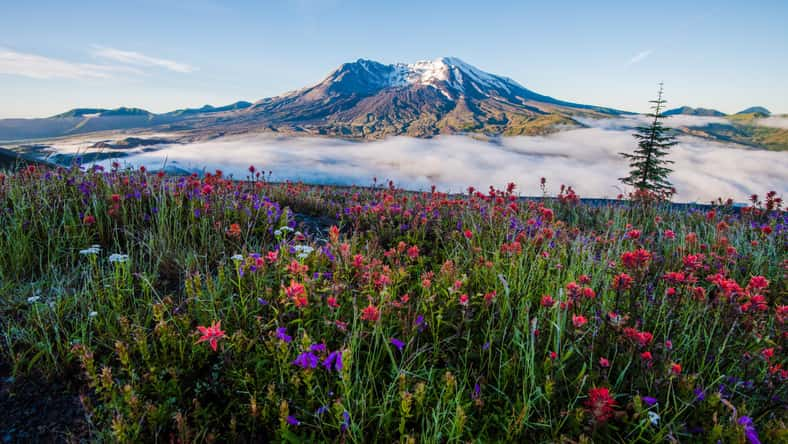Gophers Have Been Regenerating The Life Lost On Mount St. Helens After 540 Million Tons Of Ash Spewed Across 22,000 Square Miles

Two years after the most catastrophic volcanic eruption in United States history, scientists released gophers on the ruined landscape of Mount St. Helens so the animals could help regenerate lost life.
More than four decades later, they were astonished to find that the beneficial effects of the burrowing rodents can still be seen today.
On May 18, 1980, Washington’s Mount St. Helens spewed 540 million tons of ash across 22,000 square miles, causing considerable damage to the area. A couple of years later, scientists dropped gophers onto part of the scorched mountain for 24 hours.
They believed the animals’ digging habits would turn up new soil and microorganisms, reviving the ecosystem—and the gophers did just that.
Now, researchers are retracing their efforts 44 years later and showcasing just how long-lasting ecosystem restoration techniques can be.
“They’re often considered pests, but we thought they would take old soil, move it to the surface, and that would be where recovery would occur,” said Michael Allen, a co-author of the study and a microbiologist at the University of California Riverside.
In 1983, the scientists’ chosen sites for their gopher experiment on Mount St. Helens were nothing more than “collapsing slabs of porous pumice,” with barely a dozen plants and some fragile seedlings attempting to regrow.
Six years after the gophers did their work, the two test plots saw a remarkable transformation, supporting 40,000 flourishing plants. In sharp contrast, the surrounding region, untouched by the gophers, remained largely barren and lifeless.
In just the span of 24 hours, the gophers made a huge difference. They dug up fungi and bacteria that were necessary for ecosystems to grow, as these microorganisms break down organic material and release nutrients back into the soil.

Dene’ Miles – stock.adobe.com – illustrative purposes only – pictured above is a field of wildflowers in front of Mount St. Helens
Most plants do not have the ability to get the nutrients they require all by themselves. They need fungi to deliver nutrients to them. In return, the fungi receive carbon from the plants for their own growth.
Gophers help ecosystems thrive by spreading soil, microbes, seeds, and fungi from their droppings into new environments. This was how Mount St. Helens was able to recover so quickly following the natural disaster.
Another key finding from the study highlights just how helpful microorganisms are to the regrowth of plant life. On one side of Mount St. Helens, there were Douglas firs, pine, and spruce from an old-growth forest that was covered in volcanic ash after the eruption.
The blanket of ash caused the needles on these trees to overheat and fall off. Luckily, they were able to bounce back.
“These trees have their own mycorrhizal fungi that picked up nutrients from the dropped needles and helped fuel rapid tree regrowth,” said Emma Aronson, a co-author of the study and an environmental microbiologist. “The trees came back almost immediately in some places. It didn’t all die like everyone thought.”
On the other side of the mountain, loggers had cleared away the trees prior to the eruption. With no trees to drop needles to feed soil fungi, the landscape is still dead over 40 years later.
The findings show that all things in nature work together, and this fine balance keeps our world turning. The study was published in Frontiers in Microbiomes.
Sign up for Chip Chick’s newsletter and get stories like this delivered to your inbox.
More About:Animals





